DET ALPHA
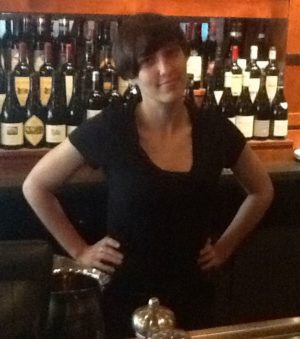
(Sabrina, spiritualist and vendor of spirits behind the Willow Bar).
Sabrina was on duty behind the Willow bar. She is an intensely spiritual mixologist, and you can always get your palm read or get an account of the full karmic impact of whatever is happening on our side of the bar from her. Saturn was apparently in the 11th House, and from what I could gather, that was important because of that planet’s influence “on the right ear, the spleen, the bladder, the phlegm, and the bones.” I knew I was going to be needing all of them, and I thanked her for the information.
I enjoyed the first sip of wine for the day as I waited for my weekly interview, eager to get on with the story of the late 1950s, and hoping to arrive in Vietnam before I ran out of the ability to safely consume the Happy Hour White. RADM Mac Showers arrived presently as we discussed what Saturn might mean for the rest of the week. The Admiral was looking dapper, and he almost asked for an Anchor Steam beer because he was feeling so good. I got organized next to him- white wine where I could reach it, plenty of cocktail napkins on which to take notes and a working pen in my hand. As with nearly all of these discussions, I had hoped to start one place and we wound up somewhere completely different.
“We talked about FIRST Fleet the last couple outings,” he said. “But there was another aspect of readiness and training that I developed while I was on the staff. That is the one I would like to talk about in some detail. In talking to the various elements of the fleet about readiness for deployment to the Seventh Fleet and what they would be requiring once they got to WESTPAC, we realized that the aviators were drastically short of adequate target materials in order to carry out the nuclear strikes for which they were responsible, and for which they were doing a considerable amount of training. They simply didn’t have the materials for training purposes, or, once they were deployed, they didn’t have good target materials to carry out long-range overland strikes into the interior of China or the Soviet Union. So, this became one of my missions, to find out what they needed and to take necessary steps or to have developed better current updated target materials. With the assistance of my aviator assistant N-2, we took it upon ourselves to visit the bases and training facilities of all of the aviation groups that had nuclear strike responsibilities where they were based on the West Coast and where they were carrying out their training activities. Working with them and through AIRPAC, we conducted an extensive series of interviews of the pilots themselves, as well as the squadron and air group officers, to find out exactly what they needed in an ideal situation to carry out their strikes, and we then used this information to devise a target folder that would include all the materials they needed.”
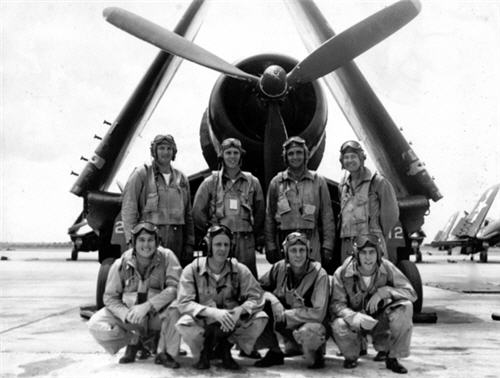
“That can be a challenge. I had an A-7 pilot on the Forrestal Med Cruise in ’90 who didn’t like the satellite image we were able to get of one of his targets. He said he would be approaching from the other side of the power plant he was assigned to take out, and asked if I could get him a picture of the target from the other direction. I realized I couldn’t do it- not while we were on cruise, anyway. It would have meant getting a target nomination up through SIXTH Fleet, and into the scramble for priority with the Imagery Committee back in DC. Who did you go to for support?”
“We worked with a number of people. We worked with our fleet Weather-Guesser, who was actually assigned in the plans division of the staff. We worked with the other officers in the Plans Division, who included an Air Force officer as well as an Army and Marine officer. Through the Air Force officer I even made a trip to SAC to find out generally the types of materials they put in o their target folders for their strategic bombers. This gave us a lot of ideas about . photography, aim-points, check-points, turn- points, all the things you needed to get an aircraft from a carrier ‘feet dry’ and into his target. Of course, the Navy delivery tactics and platforms were substantially different than the Air Force was using with their high-level, long- range strategic bombers. So, we had to modify our target folders accordingly. We did that, and we established in detail the materials the pilots wanted in order to carry out their missions. Having done that, we then encountered the problem of how to produce these target folders. We had the target list. We knew what the targets were, and where they were. We just needed to get the images, charts and check-lists to the pilots who had to fly the missions.”
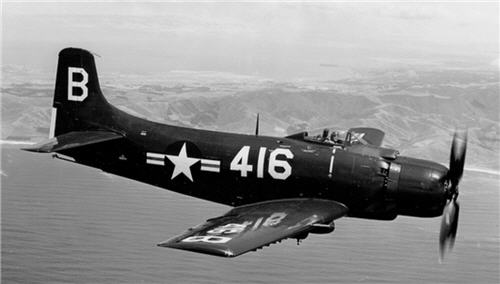
(AD-J Skyraider in flight, one of the slowest aviation delivery platforms for nuclear weapons. Dad often told me that straight and level, the Skyraider could outrun a P-52 Mustang, but if I was going to light up a target in the Far East Military District, I think I would like to have a jet under me).
“So, who were the people who designated the targets? Was that done at the national level or with the Strategic Air Command?”
“Oh yes- it ws all part of the Single Integrated Operational Plan.”
“I knew the SIOP. The people in Omaha were alwys running drills during their work-day, which as a pain in the butt when you are in the Far East someplace. They would go all night sometimes when we had the Emergency Action Message watch on the ship.”
“The detailed information was held at PACFLT and at FICPAC intelligence-wise, not by us. In fact, it was with only with some difficulty that we were able to penetrate the bureaucracy surrounding the list.”
“Did you succeed?”
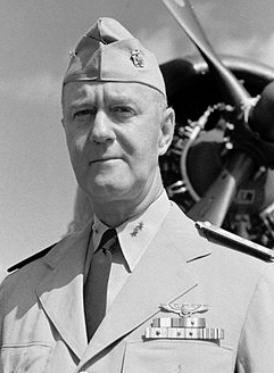
(Admiral Felix Stump).
“To some extent, we did. But I was extremely fortunate in having Captain Rufus Taylor as the N-2 at PACFLT, and he was extremely cooperative and helpful in opening the doors for me. The Plans Officer at PACFLT at that time was then- Captain Grant Sharp, who later became Commander-in – C hief at PACFLT and then the theater commander at PACOM.”
“Some people just can”t bear to leave the Islands!”
“He was the Plans Officer at PACFLT at the time and Admiral Felix Stump was the Commander-in-Chief. We had to convince each one of these officers through a series of briefings about what we were doing, what we needed, and what type of information to which we had to have access. With their cooperation and a lot of pushing by Captain Taylor, and extensive briefings, we did, in fact, push forward to gain access to the necessary information simply to be able to devise target folders. But then the physical production on these targets became the next problem. First Fleet did not have the manpower nor the facilities, nor the information in San Diego, to do this job.”
“Who did? The Fleet Intelligence Center at Pearl Harbor?”
“Just so. The information was held in Hawaii; the raw material was largely held at FICPAC, where there were a large number of people working over photography and various other things that were needed in these folders. They had the photo-interpretation facilities and all of the equipment, none of which we had in San Diego. But despite the fact that the information and facilities existed in Hawaii but not in San Diego, CINCPACFLT still said it was a FIRST Fleet responsibility, because it was a readiness responsibility, and they said, “You proceed to do it, plan it, and do it, and we’ll support you.”
“Sounds typical. So, who did?”
“In the end, the solution was to create a new organization in Hawaii that was co-located with FICPAC, which became known as FIRST Fleet Detachment Alpha, or just “Det A” for short. That was created and billets were
procured from thither and yon within the Pacific Fleet and the air organization and FICPAC and PACFLT and so forth.”
“Birth of a new command billet. Who got the rose pinned on him to take charge?”
“An aviator named Jack Fitzgerald. Jack was a gung-ho aviator who had been in our Readiness Division on the FIRST Fleet staff for more than a year. He and I had become close friends. We had taken several trips together. He had assisted us in devising the content of these target folders as we developed them. When we reached the point of creating First Fleet Det Alfa, he was eagerly anxious to head it. It was a natural; he was an aviator, and he knew the problem. He was interested and competent, and he wanted to move to Hawaii. So we did; he became the officer-in-charge. He moved to Hawaii, and he was the only billet that we gave up to form the Detachment. All the other billets, and I think we got twenty or thirty people who made up this detachment, came from within PACFLT resources. They used FICPAC’s materials, photos, graphic materials, and used FICPAC’s equipment, photo-interpretation equipment, drafting tables, and so forth. And we literally, physically, produced target folders, one by one, by one for the designated targets, including the materials that we had identified that needed to be provided to the aviators so that they could study their en route targeting, their check points, their delivery points. all of which was an art form that had been developed for nuclear bomb delivery in those days. Of course, it was different for different types of aircraft. We had the A-3s that were large twin-engine jet bombers, and we had the ADs, which were a single-engine, propeller-driven plane that would fly long legs at low altitude and deliver their bombs by a pop-up mode; an ‘over-the-shoulder’ delivery it was called in those days. So we had to devise slightly different target folders for different types of aircraft.”
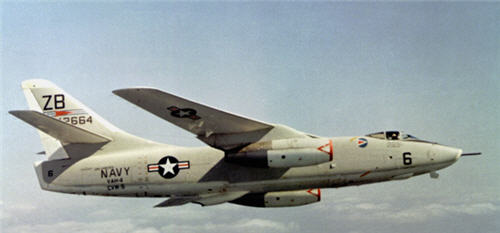
(A-3 Skywarrior).
“Those were the days of the Navy’s first adventure with cruise missiles, the subs that carried the Regulus missiles. Did you also have to produce targeting material for them?”
Mac sighed, remembering. “Yes. We tried, but we didn’t really ever get into that because they didn’t need anywhere near the amount of information, and the type of information that a live pilot flying an airplane had to have. I don’t recall where their targets were designated. We didn’t do that; we didn’t designate the Regulus targets. But I believe that they were provided with target materials by whatever authority was designated their targets. That was never a very extensive program, and they didn’t have very many targets since they didn’t have very many weapons.”
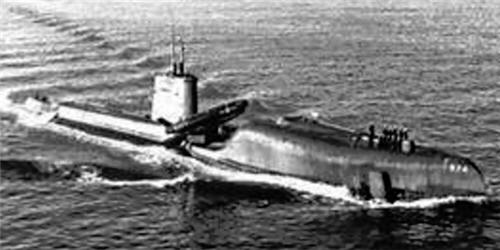
(USS Grayback (SS-574) underway on Regulus missile patrol).
“Well. There were not that many Soviet targets in the Far East beyond Vladivostok and the cluster of submarine targets on the Kamchatka Peninsula.”
“True. As I recall, the ones we were generally concerned with were operating near Petropavlovsk, and in the northern reaches of the Soviet Union. The ones around Vlad in the Sea of Japan were air targets.”
“We mostly worried about Petr, where their front line boomers and attack subs were based. But it sounds like this was the birth of the target folder era for the carrier pilots.”
“Yep. The target folder program and the creation and management of First Fleet Det Alfa was really a major development and became a leading steady-state activity in the intelligence division during the two years that I was there.”
“I know generations of intelligence officers who have spent time helping to build those folders, Admiral. It was the main part of any squadron or Air Wing job.”
“It was a stimulating tour. It was a job in which, for the first time, I really felt like I was given a free hand and very good support in developing some innovative things — mainly these target folders, which had not existed previously. It was unbelievable to me when I realized what the Navy pilots were expected to do and how little they had to do it with. When we used to sit down with pilots who were flying these planes, and told them that we would provide them target materials so that they could do their job, they were just astounded. This was the first time anybody had come to them and said, “I’ll help you.”
“Better than telling them to ‘fly west ’til you see a naval base,’ I suppose.”
“That is for sure. It was also heartening to know that we were doing something that somebody really appreciated. Of course, the program was still going on in high gear when I left, and I don’t what the eventual outcome of it might have been. Except that I do know that a few years later when I got back out to PACFLT as the N-2, I discovered that DET Alpha had been disestablished, and FICPAC had, in fact, taken over the target folder preparation, and they were doing it, which they really should have done originally.”
“You almost had the tail wagging the dog, didn’t you?,” I said, waving to Sabrina down the bar for emergency replenishment of the Happy Hour white and some positive psychic energy. Talk about nukes always leaves me a bit drained.
The Admiral gave me a thin smile of satisfaction. “Well, I don’t know what FICPAC was doing at the time that was so all important, but ‘Rufe’ Taylor said that he simply couldn’t take on this mission as an additional function and that he would help us create Det. Alfa if we would get the people and staff it. Well, we did. He helped us get the billets, he provided the spaces, and we got photo interpreters from various fleet units. We found them were scattered around the Pacific Fleet and many were not even working in rate looking at imagery. So we were able to beg, borrow, and steal photo-interpreter talent and got them assigned to our detachment.”
How much support did you get from the Office of Naval Intelligence back in Washington? That seems like it would be a national mission.”
“Very little. It wasn’t their concern; it was really a Pacific Fleet show. I worked with an organization in San Diego that…” Mac looked up, a bit startled that his memory had failed him.”I can’t remember the acronym for it, but it had control of all personnel assigned to all ships and units in the Pacific Fleet, and if I said I wanted to find out where all the Photo Interpreters are, they could give me a computer printout of a hundred or so photo-interpreters who were scattered throughout the fleet. It was a success story. I never did know if the people on the Atlantic side ever did anything like this. We were pretty autonomous.”
“OK,” I said, putting down my pen to concentrate on the wine for a moment.”Two great Fleets, Atlantic and pacific, separated by a common Navy. So that about covers your time in San Diego. What was next?”
“Back to Washington. And back to Special Intelligence and Y-1, finally. After having left Y-1 back in 1950 to go to London, I now had orders to come back and head Y- 1. I was delighted to come back because I really felt like I was coming home after having been around the world in Europe and detoured in the Intelligence School then out to San Diego. It was with great delight that in 1957 I headed back to Washington. As a matter of fact, I had the family already back there because the house that we owned at that time had been rented to a Navy Commander and his family, and they left in December on assignment and we decided to let the house stand vacant until we got back.”
“Ah, the joys of the military move!”
Mac laughed and reached for his Virgin Mary.
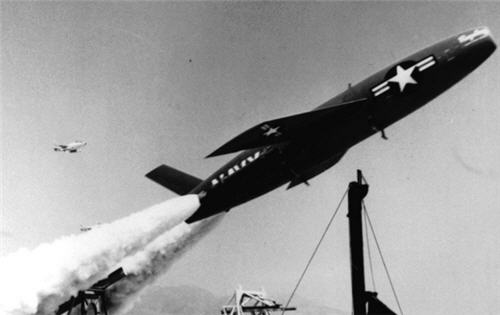
Copyright 2017 Vic Socotra
www.vicsocotra.com
156
J
Port Visit
Harbor park bench
Cup of Shizuoka tea
Cormorant floats
On a placid sea
copyright J.P.N. | Poetry, Etc., From Kanagawa, South of Tokyo, Japan
www.carllafong.blogspot.jp
Old Navy
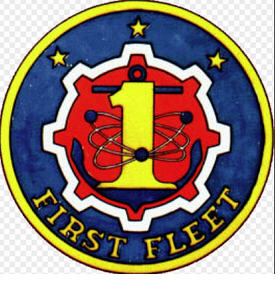
Mac did not have a good weekend, nothing bad, but the Docs had taken beer away from him again. Boomer had the shift off to do family business, and Big Jim was covering for her along with Liz-with-an-S. There was energy in town, the elections and the partisans on both sides had become irritating. It looked like a time to move forward, perhaps to Mac Shower’s time as the Pacific Fleet Intelligence Officer, the job once held by his old Boss, Eddie Layton. That was not going to happen. Perhaps the Virgin Mary that Big Jim assembled for him was not exactly what he wanted, or something else had driven a mildly pensive mood to the afternoon. I was fairly upbeat, since the day had gone as well as could be expected at the office, and we had actually won a task order from the government on the big open-ended contract I allegedly manage for the company.
I was having the Happy Hour white, and I expected to have a few of them while we talked.
“So, on to the Pacific and Vietnam,” I said, lifting my pen.
“Not so fast. You got me thinking about the the last genuine character in the U.S. Navy: Vice Admiral William Kearney Phillips. He was a colorful gentleman from Texas and a delight to work for at FIRST Fleet.”
“Admiral Nimitz was a land-locked Texan when he started as well. Is there something about the Lone Star State that makes for great Naval leaders?”
“Admiral Phillips was as authentic as they come. He wore a Silver Star for valor and had, at various times, commanded a submarine, destroyer and a cruiser. I think he was Annapolis Class of ’17, and had World War one service on a cruiser. He was assigned to intelligence duty in the Panama Canal Zone, so he knew a little bit about what we do, and in the second war he was in command during the Gilbert and Marshall Islands campaigns, the first battle of the Philippine Sea and the later strikes again Guam and Saipan. And you might be right about Texas. I have worked often with the nice folks at the National Museum of the Pacific War, which is located in Fredericksburg, the boyhood home of Admiral Nimitz. Not many of us left who actually knew him.”
“I actually had an interaction with them when I was at THIRD Fleet the first time,” I said, taking a pallet-cleaning sip of wine. “They were looking for a piece of the Arizona to display in Texas. One of the Pearl Harbor secrets is that the wreckage cut off the ships after the attack was taken to the Waipio Peninsula and stacked in pieces according to what ship it came off of in case it was needed later. There apparently had been periodic attempts to purchase the pile of rusting steel that had been Arizona’s superstructure. I suppose the buyer wanted to make souvenirs out of the steel- key chains, maybe.”
“Clearly an inappropriate use of parts of a war memorial,” said Mac firmly.
“For sure. But I wound up with the chart of where the pile of Arizona steel was, and the museum sent someone out to look at it for something that would be immediately recognizable as being part of a ship. They found a hatch and frame that would do nicely, once cleaned up and painted haze-gray.”
“I dont recall seeing something like that the last time I was down in Fredericksburg.”
“No, I don’t imagine you did. Someone stole it from the warehouse while it was in transit to Texas. So maybe there are some keychains out there we don’t know about.”
“Sol Phillips would never have put up with it,” said Mac. “Like I said, he was a character. Destroyer-man in the Big War, much in the manner of 31-knot Arliegh Burke and his Little Beavers. Wyman Packard knew him better than I did, since he had been at FIRST Fleet for a couple years when I showed up. He was given a fourth star when he retired and went home to Texas. But my favorite story about him is what shows the kind of guy he was- real Old Navy. When he arrived to take command, Wyman scheduled him to be indoctrinated for communications for the first time.”
“Imagine that- a three star admiral and combat hero and no Special Intelligence background? That is how commanders make uninformed decisions.”
Mac nodded in agreement. “That is why it is important for the Admirals to know about all the arrows in their warfare quivers. But since Admiral Phillips had never had access to Special Intelligence before, he had to have a background investigation. The Navy insisted.”
“I hate those things,” I said with sigh, thinking back to the time I got in trouble for falling asleep during a lie detector exam. Not to mention the urine tests and all the rest of that nonsense. Like it stopped Snowden or Manning from walking off with the whole data base.”
“It is what it is,” Mac said. “Has been since the beginning. Anyway, since a background investigation of the Fleet Commander was required by regulation, the machinery began to grind on. Forms were filled out and submitted and the Navy investigators began their work.”
“I am actually kind of looking forward to not having a clearance,” I said. “The five-year general updates, the five year polygraph cycle and the two-year Top Secret in-status limit. I am tired of my own government following me around.”
“You have to be careful with the Crown Jewels,” said Mac. “But remember, the very existence of COMINT was not declassified until the early 1970s, and it was a very big deal when I was at FIRST Fleet.”
“I understand. So how did the Admiral take it?”
“He told a story that he heard back from a buddy in Texas while the investigation was in progress. What he heard was this: “Sol, you ought to know the ‘Feds’ were here asking all kinds of questions about you. And I didn’t know what you were up to so I told them everything I could to steer them wrong. I hope they never find you.”
“Did he get his clearance?” I asked.
“Eventually, he did, and Wyman read him into the program, and he continued his command tour. He used to have a sign in his office that read: “They who go around in circles shall be known as Big Wheels.”
“Our pal Jake had an inflatable cow head mounted on the wall in his office as the Director of DIA.”
“I would expect nothing less,” and he took a sip of tomato juice. “Did I mention the best restaurant in Coronado, the Mexican Village?”
“It was still open down by where the ferry landing was. I heard that before the bridge was opened, people would get the cars in line to board the next one to go to the San Diego side and have a margarita or three while they waited.”
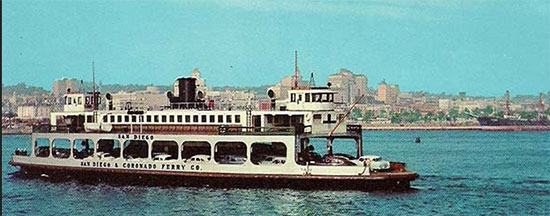
“We called it the Mex-Pac, in honor of where the fleet units were deploying. Great place and great food.”
“It was. So much is gone now.” I thought about the other little bar just up Orange Avenue from Mex-Pac, the one that opened at 0600 to catch the Chiefs trade before morning quarters. “So,what does a fleet commander concentrate on when he is home-ported in San Diego?” I asked. “I know what we were interested in when I was there, and that was mostly Soviet ballistic missile submarines.”
“Admiral Phillips concern was primarily Southeast Asia. He had just returned from there, as I mentioned, and I think he saw that there would be a wider conflict presently. He wanted to be fully prepared if he was ordered to deploy again and set up a joint staff to manage operations in Vietnam.”
“What sources of information did you use to keep the Admiral up to speed?”
“All sources, attache reports to COMINT. Communist expansion in the region was a concern, and a primary one for the Admiral. But we also kept an eye on the Soviets and particularly the Soviet Pacific Fleet.”
“It became an all-consuming effort,” I said, finishing my glass of Happy Hour white. “But working for a commander who understands what is going on and has a vision to deal with it is pretty special.”
“You bet. We could level with Sol Phillips and tell him what we really thought. Sometimes you have to do that. Admiral Phillips was a great man to work for, and we were sorry when he retired.”
“I bet. Is that going to get us to Vietnam?” I said hopefully.
Mac shook his head side to side. “No, that is going to mean a trip to Arlington Hall Station and Fort George Gordon Meade first.”
I picked up my pen again and waved at Big Jim down the bar for reinforcements.
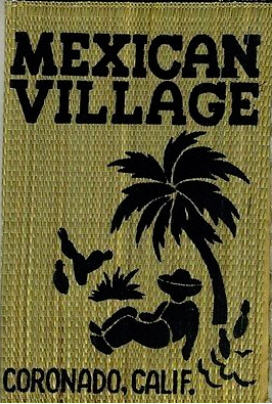
Copyright 2017 Vic Socotra
www.vicsocotra.com
Life and Island Times: Desert Roads
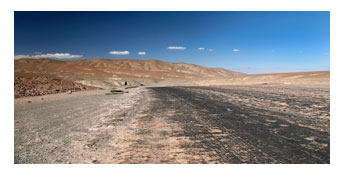
After a brief blast on the interstate that morning, the newly reformed trio exited the world of slab concrete super highways and cement overpass columns to wander through the open country. They would sometimes be rolling on barely visible, dust coated roads, where only occasional ruins bespoke the ancient presences that required a road to or through them.
The city’s speeding cars, overloaded vans, growling semis, and wailing police cars were now two hours in their rear view mirrors.
They soared along the empty highway up and down as it rose and fell, back and forth round as it curved until they were out in a vast desert wasteland.
Flurries of dust and sand swirled around them as they rode through an eerie, barren land. The only sound outside of their motors was that of a rising wind.
Ahead something loomed out in front of a growing dust storm to the south. As they approached they saw that the storm was about to engulf the rusting remains of a massive oil pump jack.
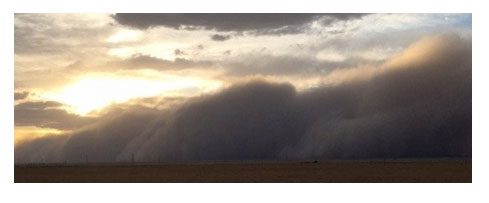
The wind and sand fell upon them. In this maelstrom of decayed earth, ordinary men would have been ground and crushed into powder. The riders knew to move close into a tight slow moving group.
Their vision dimmed and all that remained were memories of yesterday and where the road was headed. They trusted their memories would guide them back . . . to the places they had planned see on the other side of this storm of earth.
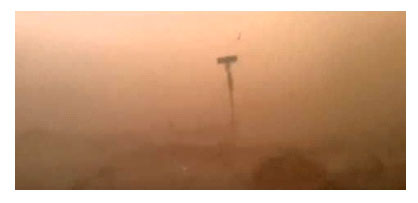
Out of the dust storm they emerged as if they were ancient mud covered wrecks of vessels from some long ago inundation. The bikes and riders were totally caked with only their tires bearing their original blackness.
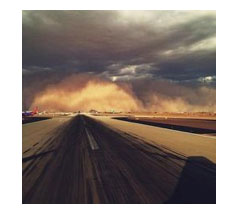
During a brief water stop, they silently remembered the terrible beating they withstood from the supercell. Despite the predicted desert heat for that day’s ride, these road warriors were dressed in leather and steel toed boots for just such a desert sand storm eventuality.
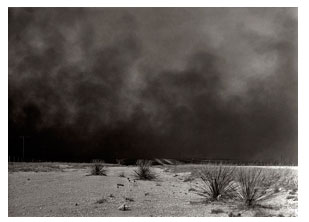
Later the blackness of a granite ridge grew to dominate the landscape in front of them. Behind the handlebars of the lead bike was Steve looking about for unexpected things. He was vigilant, muscular, tense – his leathers worn and scuffed from hundreds of thousands of miles.
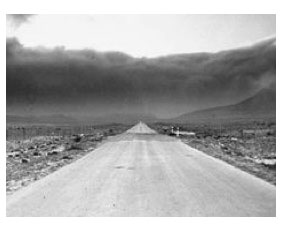
The black clad riders cruised down the roller coaster highway. As they crested a hill, Steve hit his brakes. His companions did so in kind well before they hit the peak and lifted their heads to look. They glided to a stop.
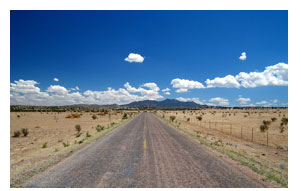
On a granite ridge close to the road, silhouetted in a dust-blown field, was a strange assortment of rusting farm vehicles and bizarre creations of welded metal. Further along the ridge, there was a burned out wooden shack and several old, gnarled, dead trees. Beyond the shack were what looked to be small work huts, a decaying barn, and a field that was once under cultivation.
The scent of ash blew towards them borne on a salted wind from some long ago inland sea.
Piles of wheels and metal covered the foreground with broken furniture and other debris littering the desert. An old road rig gathered sand where it was abandoned along a dirt path that lead to the shack.
Their minds bordered on feverish while gazing through the heat haze at this human and natural wasteland. The wind sound dissolved into a buzzing that signaled the arrival of dive bombing flies around their faces. These little biters were like their bigger black fly brethren from the northeast they encountered several weeks earlier.
The earth here was sour as if its bones had been poisoned. Whether mankind or Mother Nature had gone rogue could not be determined.
Sadness hung over this region, a vestige, perhaps, of some forgotten dead sea. They were as far away from the Green Place they called home as they could get. Not even creepy crows were present. The soil was disappearing. There was no surface water.
They were the only ones on this Plain of Silence.
There would be no moon that night. The sky above their heads would be inky black. They needed to hurry onward to their motel before sunset after which they would surely lose sight of the unlined sandy road beneath them.
The road became lusterless, scaly, humping toward the center. There were no lines, no telephone poles, no mile markers, no road signs, no ruins of man, no tottering barns in fields, no trees, no houses, no fences. Just the sun and its glaring heat.
The road’s surface narrowed and became a gut-wrenching goat path. They were forced to dodge canyon sized ruts. While dealing with teeth jarring bumps and dips, the riders saw that this old road had memories. They were well hidden, forcing one’s contemplation inward. These potholes and cuts were testing their maneuvering skills
This desert highway would not lead them to new destinations, let alone attractions. It would lead to inner revelations. Long had this been the way with the road called life. This highway, despite its barrenness, was oddly beautiful. The riders did not know not whether they were traveling on it or the road was traveling in them.
They were silently awed by it.
After briefly exiting the empty wasteland to gas up at a one pump station, they headed out on the day’s last leg. After miles and miles of baked asphalt and sand and salt smell, they came upon a short stretch of highway that was aromatic with the steely fragrance of freshly dampened blacktop. They reveled in this rarest of smells on a desert road.
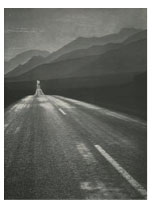
They were beginning to understand fully the wisdom of traveling beautiful roads past ugly places over riding ugly roads to beautiful places.
Steve said at the last pit stop, “This road reminds me of life. It’s headed somewhere familiar, but every time I look up, there’s a new obstacle or another big hole to avoid.”
Abruptly, the desert road simply ended as the sun was setting. No cul-de-sac. No sign like the ones they had seen before: “Stop.” Name of a town with and arrow and distance. “Private Property.” No Trespassing.” Just road . . . . then a decision. Which direction to take to continue?
A faint red glow on the horizon to their left told them the way.
Copyright © 2017 From My Isle Seat
www.vicsocotra.com
Out Of Sight
Somewhere out in the desert
Where dead end trails lead
Dreambirds dance on rocks
Toad eats a centipede
copyright J.P.N. | Poetry, Etc., From Kanagawa, South of Tokyo, Japan
www.carllafong.blogspot.jp
The FIRST Fleet
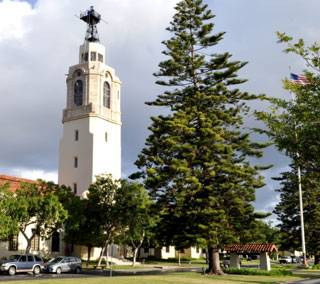
(COMNAVAIRPAC Headquarters, Naval Air Station North Island, Coronado, CA).
Boomer was behind the Willow bar, and she was pouring with abandon. I had not had a good day at the office, and it was a relief to her about what her kids were up to, how her Dad was doing, and the rest of the maelstrom that is her life as a single Mom and breadwinner for her family. And living down by the Occoquan River, and don’t get me started on that.
Mac Showers was dressed in a jacket and bright shirt and looked comfortable despite the sweltering heat outside. I was completely unprepared, which made me feel vaguely unprofessional, a sensation that I hate.
“So you picked up your family and moved to the West Coast?”
“We did, indeed. We went to San Diego and settled in Coronado because the headquarters then was in a building on North Island Naval Air Station. I relieved Captain Wyman Packard, the first of two or three times when I relieved him.
“It was a small Naval Intelligence community then, Sir.”
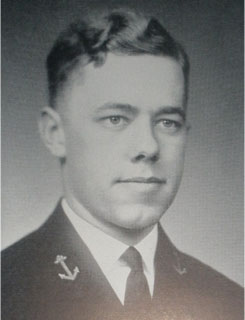
(CAPT Wyman Packard, historian of Naval Intelligence, as a Midshipman).
“It certainly was. Not even a third of what it is today. We all knew one another. But the most interesting aspect of going into the tour was that at the time I got my orders, Wyman and some of the staff, including the admiral, were deployed. That was the first, and I believe the only time, that Commander, FIRST Fleet ever was deployed in an operational role. They were gone for several months. I think they deployed in mid-1956 and did not get back until the end of the year. They were deployed to Southeast Asia because of the French problems in Vietnam.”
“No kidding. You could have been part of the first American intervention in Vietnam!”
Mac smiled and nodded. “I suppose that is true,” he said. “I always like to be ahead of the game when I can. That was at the time of DienBien Phu, after which the French pulled out from Inda-China. But there was the concern that the French, because of their problems, might request U.S. assistance, so the U.S. Navy was prepared to set up a Southeast Asia Command which would have been a joint staff with Army and Air Force officers assigned. And to be ready for that contingency, FIRST Fleet went forward with part of his staff.”
“But what forces did he have to influence anything?”
“I don’t know the details, since I was a non-participant and this is just what I got from Wyman when we turned over. I understood that the Admiral borrowed some ships from SEVENTH Fleet. They had a couple carriers and supporting ships that operated in the South China Sea and were prepared to assist the French if they asked for help.”
“There has been some controversy over that. The accounts I read suggested that the weather was too crappy to provide close air support.”
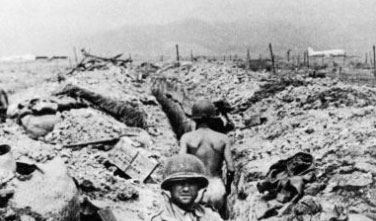
(The French having a bad day at Dien Bien Phu).
“Probably true, but in the end, the French decided to abandon their empire and went home. They had problems much closer to home in Algeria, which was considered a part of metropolitan France at the time. That was far more emotional than far-off Indo-China.”
“Funny you say that, Admiral. I was in Tokyo and drinking at the greatest bar in town at the Old Sanno Hotel, the hotel the military appropriated during the Occupation. You could see just about any old Asia Hand in there at one time or another. Anyway, I was sitting next to a guy a little older than myself and we got to talking. He had been Special Forces, and was interested in the military history of the French and American wars. He told me that in 1969 he had arranged for an insertion mission at Dien Bien Phu so he could see it.”
“I guess that is what you call a combat tour!” laughed Mac. “I suppose I am not surprised, since all the regular Vietnamese forces were pulled south to replace all the VC who were killed in the Tet Offensive the year before.”
“It certainly blew my mind, but another pal who was in the Special Operations Group said they went north of the DMZ frequently and it was safer up there if you minded your own business.”
“Well, that opens up a couple cans of worms, but that takes us forward to Vietnam and I thought you wanted to talk about FIRST Fleet.”
“Well, my interest stems partly from the fact that I was on the THIRD Fleet Staff twice, with radically different missions. The first time, in Hawaii, we were ashore at Ford Island and supposed to be the Theater Anti-submarine Warfare Commander. Our main mission was targeting Soviet boomers. The second time we were in San Diego like you were, but although we had a flagship, we mostly did training and certification for deploying Strike Groups.”
“I will beg ignorance of what the THIRD Fleet people are doing now, but we were primarily responsible for the same thing: training and readiness among type-commanders who were then resident on the West Coast.”
“Same deal. AIRPAC and SURFPAC are still there. They used to each have a Captain billet, and some of our crusty old guys would trade jobs every three years because they liked living in San Diego.”
“I was a Commander then, but we had a lot more opportunity for officers who wanted to stay away from Washington. In addition to the Airdales and the Black Shoe Type Commanders, we had the Cruiser-Destroyer people, the Amphibs, and even SUBPAC and Service Forces had reps there from Hawaii where they were headquartered.”
“Wow, I had no idea they had actually streamlined things. It was a bewildering mass of competing equities even in my time.”
“under guidance from PACFLT HQ, we were responsible for herding the cats through unit, type and inter-type training of the non-deployed Fleet forces, preparing them for contingencies, emergencies and the deployment rotation to the SEVENTH Fleet AOR.”
“There are some constants in the Navy,” I said, taking a sip of vodka tonic. Mac looked at me with a questioning glance. “I know. I normally don’t drink hard liquor when I am out for Happy Hour at Willow, but it had been a bad day at the office. Not as bad as a Comprehensive Training Exercise off Camp Pendleton, but you know what I mean.”
“FIRST Fleet was a great tour, great quality of life, but as you probably know better than most, there isn’t a whole heck of a lot of intelligence going on. Our division was a very small office, The N-2 had one assistant and a yeoman, and that was it. The Assistant N-2 was normally an aviator and a sub-specialist. As one of my collateral duties, I was the Special Security Officer- the assistant normally was not cleared for COMINT. Those were the days when COMINT clearances were tightly controlled and extended only to a few people. I had a large double-door safe in my office that I inherited from Wyman. I kept all the COMINT materials in there, the studies, messages and background papers. I was the sole custodian, and I had to open up in the morning and close it at night, and remember to lock it up if I was going to lunch or make a head call. The only ones on the staff who were cleared were me, the communications officer, the Admiral and the Chief of Staff. Ops, Deputy Ops and the Plans guy.”
“So, it sounds like a great tour to be with the family in San Diego. It sure was for us.”
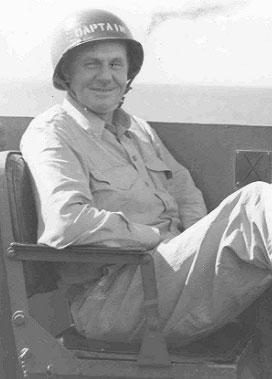
(VADM “Sol” Philips as a Captain in command).
“Oh my, yes. It was marvelous. Coronado Island is one of the great places on earth. But I should tell you about our Admiral- “Sol” Phillips. He was one of the great characters I knew in the Service.”
It looked like Mac was ready to tell the story, but I was confronting the bottom of my glass, and decided that the three of them had been plenty, since Boomer does a great pour and I had to drive. “I will catch that one next time, Sir. I am just amazed that our experiences were so similar in times so far apart.”
“I don’t think the missions were any different for any modern Navy,” said Mac. “You fight like you train, and that is what sets apart a first class Navy from all the rest.”
“Amen, Sir.”
Copyright 2017 Vic Socotra
www.vicsocotra.com
Tradecraft
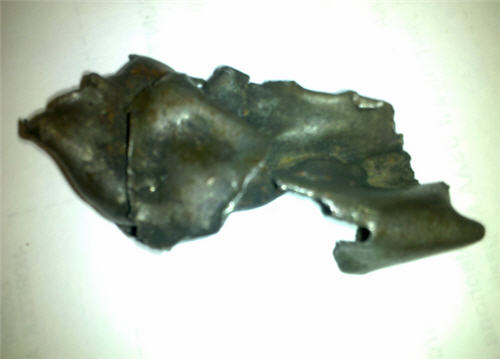
(1966-vintage shrapnel from a rocket attack in Saigon).
Willow was quiet, but it was a wary quiet, awaiting the arrival of people who would drink away the stress of the day. Old Jim was listening to music on his MP3 Player, Mac Showers was dressed casually in an aloha shirt and slacks. Jasper was holding down the bar, waiting on Big Jim to arrive to handle the Happy Hour crew. Heather 2 was on the wait-staff, though they had been auditioning her to work the bar as a fill-in, due to the loss of Brianasaurus Rex, who had left Willow for what we understood were “creative differences” with management about the cut of her tight Lycra top stretched over her imposing décolletage.
There is always a moment of silence when one of the bartenders departs the family, and Briana had been warmly welcomed, at least at our end of the Willow bar.
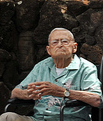
(RADM Donald “Mac” Showers in his customary aloha shirt).
I was in my grown-up work clothes with a jaunty bow tie. The Admiral fished in the front pocket of his slacks and brought out two objects. One was one I recognized immediately- it was a battered Zippo lighter with the squadron logo of Fleet Aerial Reconnaissance Squadron ONE, the West Coast intelligence collection aviation unit. The other was something I did not recognize- a nasty looking twisted piece of metal that despite its tarnished exterior radiated a passive hostility.
“OK, I’ll bite. I recognize the lighter and have dozens of them. I used to collect them, in fact. But what it the other thing?”
“Well, you can add the Zippo to your collection, and we are going to talk about VQ-1 one of these afternoons. The other thing I thought you might find interesting. I found it the other days going through an old box. It is a piece of shrapnel from a VC rocket that was used to attack the Meyercord Bachelor Officer’s Quarters one night in Saigon while I was there. I walked through the wreckage the next morning and picked it up as a souvenir.”
I picked it up from the bar. It was as ugly a thing as I have seen. The edges were still razor sharp where the high explosives that the steel shell casing had enclosed had turned it white hot, twisting and ripping as the missile tore into the cinder-block façade of the BOQ.
“That would get your attention right quick,” I sad, putting it down before I nicked my finger on the sharp edges.
“You bet. Particularly traveling at more than a thousand feet a second. No one got killed in that attack. Not any of our guys, anyway. But that was the Saigon experience.”
“I only visited that town once, Admiral. Much later, of course. But it was an amazing trip.”
“Oh,” he said, brightening a bit and leaving Saigon behind. Or ahead, if you were trying to follow the wandering Willow narrative. “After our talk last week, I was thinking about my tour at the Schoolhouse. I look back at it- the tour I didn’t want to do, and upon reflection, it was one of the best and most satisfying of my Navy career. After talking about it with you last week, I thought of some other memories of that time. I was almost discouraged about having had my orders changed and having been sent to an environment with which I was totally unfamiliar. I hadn’t asked for it, hadn’t thought about it, and didn’t really care much about it.
“What was the course work like? What did you try to teach the new Ensigns if you couldn’t use classified information to teach them?” I decided I really liked this version of the Happy Hour white. Curiously refreshing, and I almost lost track of educational challenges in the Intelligence Community. Mac was able to drag me back.
“Well, that was one of the challenges. “In the course of the two years that I was there, I instructed four classes, four complete classes, start finish. These classes averaged 80 or so officers per class. In my two years, I was privileged to work with and instruct perhaps 300 or more officers. Probably half or two thirds of those officers were Ensigns who had been commissioned in the Officer Candidate School at Newport and were now coming through Intelligence School. The balance of the class was composed of unrestricted line officers who were taking on intelligence as a subspecialty, and they ranged in rank from Lieutenant to Commander. Each faculty member was assigned a proportional number of students for whom he was ‘faculty advisor.’ So, in addition to working with the class as a whole, each instructor worked intimately with perhaps fifteen or so individual students for whom he was faculty advisor.”
“I remember the courses at Denver started out with ship recognition and some basic photo interpretation. It was fairly basic stuff until our clearances came through and the instructors could talk more freely about what we were really going to be doing.”
Mac nodded. “In my time the basic course started out with Professor Francis “Frank” Decelles. He was, incidentally with the Naval Postgraduate School system, which had jurisdiction over us, He was the senior professor in the Naval Postgraduate Schoo1 system. He was one of our links to Monterey. During our six-month course, would hold forth for the first six weeks full-time. All lectures. Essentially, he really lectured for about four hours in the morning. In the afternoon, then, we would have discussions, seminars, and various other activities to give some variety. But the first six weeks were devoted to Professor Decelles lecturing on world politics and the political scene, history, geography, whatever.”
“It is a wide world out there and a lot of folks don’t pay much attention until they actually have to visit it.”
“I never did take the Decelles course, so I can’t tell you exactly what he covered. I used to sit in on some of his lectures. He was a good lecturer; a flamboyant man who loved to talk. He did this over and over, course after course. When the curriculum was expanded from six months to twelve, Frank’s courses simply expanded to eight weeks instead of six, so he could talk more.”
“I have shared the misery of having to listen to military people who thought they had a lot to say, and plenty of PowerPoint slides to back it up,” I said, wincing at the memory.
“It can be painful. Then, after Decelles’ course was finished , we started our instruction in various aspects of naval intelligence techniques and tradecraft and so forth. Field training was essential. As I mentioned last time, we’d go to Quantico, or Patuxent River, or David Taylor Model Basin, and we’d put them in the role of an attaché — a foreign attaché– observing a U.S. base or activity as an exercise in tradecraft. They would even take pictures, like the Moscow attaches would on Schmidt’s Embankment in Leningrad, the only place we could get a look inside the doors of the covered building halls where the new generations of Soviet submarines were being constructed. Satellites could not see through the roof, after all. Sometimes low-tech is the only way to collect effectively. After we returned from the trip, the students had to write a report. They would try certain little techniques of discreet activities not to get “caught” collecting. Some worked well and some didn’t. I think that’s something that an individual designs himself and picks up rather than gets taught.”
“I completely agree. When was your tour up at the school?” I asked, underlining the word “tradecraft” on the napkin in front of me.
“January, 1957, two years almost on the nose. We had just graduated a six-month course before Christmas. I am glad we talked about it. In thinking back, and I still look back on it to this day, it was one of the most rewarding tours that I ever had in Naval Intelligence. I think it was mainly because I was working with a large number of people, and getting acquainted with them. Wherever I went and whatever I did for years afterward, I would encounter these people in various pursuits, assignments, and walks of life. They didn’t all stay in the Navy, obviously. They would remind me that I was one of their instructors in Naval Intelligence School, and frequently they would remember, and I wouldn’t — mainly because there were so many students and I didn’t get that close to all of them. “
“I had the same thing happen after I was the junior Assignments Officer. I always wondered if one of my former clients find me in an alley or a dark parking lot and try to beat the crap out of me.”
“Apparently I did a better job at the Schoolhouse,” he said with that twinkle in his eye. “It happened to me all over the world for many years, and it still is rewarding that we were able to make an impact on so many lives. An example of that is Senator Dick Lugar. He went to OCS and came to us as an Ensign; he did his time in the Navy and then went back to Indiana politics, became mayor of Indianapolis, and whatever, House of Representatives, and then a United States Senator. Many years later when I was with the Director of Central Intelligence, I was testifying before the Senate Intelligence Committee, and Senator Lugar came up to me and reminded me I had been one of his instructors at the Naval Intelligence School. He was not one of the students for whom I was faculty advisor, and frankly I didn’t remember him being there. But that’s one of the gratifying things that grew out of those orders to Anacostia. And we might have taught those officers how to read and write, which certainly worked out for Dick.”
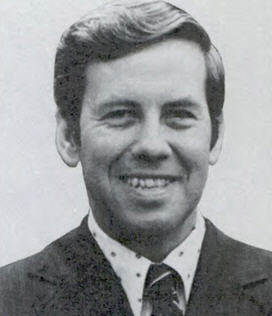
(A young Senator Richard Lugar, R-IN).
“As a general proposition, I believe in literacy for our public servants, Admiral.” I took a deep pull off my Happy Hour White, put it back down on the bar and tried to remember what I had thought we were going to talk about. “But weren’t we going to talk about your time at FIRST Fleet out in San Diego? That was my favorite place to live in all the United States.”
“In those days I would have tapped a cigarette out of the pack and flipped open my Zippo to light it.”
“I remember those days,” I said, having had a Marlboro on the walk over from the office. “I guess the world has moved on a bit, wouldn’t you say? Now, about FIRST Fleet….”
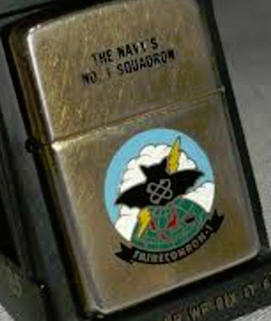
Copyright 2017 Vic Socotra
www.vicsocotra.com
Life and Island Times: Rendezvous
This day would be a low mileage day of a bit over 300 miles. Unfortunately it would be almost entirely on the I40 slab. It would be the last short day for a spell. They had the remainder of the US’s vast southwestern Big Empty to negotiate. They had a course plotted in the general direction of Louisiana’s Big Easy for the two succeeding days.
They hastened across the high plains desert, stopping only for fuel. At one such way station they met up with another Harley-riding pilgrim in Winslow. Early 60s in age, short in stature, with a long grey hair ponytail and pointy tobacco stained beard, he rode a custom painted and tricked out early-80s vintage Low Rider of his own design.
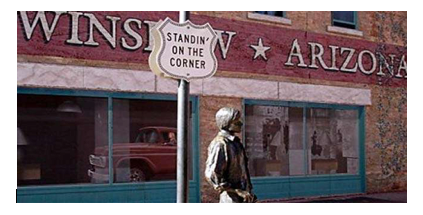
Based on how he rode purposely up to them, he seemed of a mind to tell them his story. They loosened their helmet straps, sat back on their saddles and listened to his tale.
He’d been a scooter trash resident in the Sedona area back in the late 60s and 70s. Neither he nor his bike showed any signs of him being a current one percenter patch wearer. But based on his faded tats, he likely was biker gang member who was no longer affiliated.
He had left Arizona in the early 80s to find fame and fortune in Missouri. After countless false starts and stops, he had become a successful indie shop motorcycle mechanic. He was headed back west to a long lost friend’s wedding in the town of Yarnell. This burgh was well south of Sedona in the previous day’s dead zone.
He hadn’t been back out this way “since the 80s when its weirdness level started rising” into the stratosphere. They silently remarked that perhaps the statute of limitations for some past misdeed had finally run out.
At length he got around to why he was jawing with them. He thought these fellow bearded wanderers could help him remember what set of back roads might take him to Sedona area directly from the east. He was adamant about not riding the slab.
He was an old school biker with a history in the area. He knew these byways existed — he just couldn’t remember them. A quick map check allowed them to point him to AZ 87 southwest out of Winslow and then onto AZ 260 west to Cottonwood and onto AZ 89. With each road number’s mention, you could see a flicker of recognition glimmer in his sunglassed eyes. On his breath was the faint herbal smell from the previous night’s bong hits. Mightily
thanking them, this half-baked, biker brother kick-started his beast and departed the station’s gravel lot in a cloud of desert dust.
After a quick stop at the Albuquerque Harley dealer to fix a soft rear brake on Augustus’s bike, they headed straight to Steve’s sister Barbie’s place. From the presence of a Valkyrie in the driveway they could tell that Steve was already here. Given his extra 150 mile handicap and their fairly fast pace that day, Steve had used a heretofore undisclosed cloaking device to hide his 85+ MPH rocket from the speed trap measurement devices along the way on I40.
These four 2-wheeled travelers took it easy while Barbie prepared a home cooked Italian meal. Leo, Barbie’s husband, prefaced the repast with some mighty tasty, dry martinis.
Once again they became a trio the next morning when Rex commenced a solo 700 plus mile journey at 5:05 AM back home.
Copyright © 2017 From My Isle Seat
www.vicsosotra.com
Life and Island Times: A War Zone and a Dead Zone
They slept in a heavenly peace after each consumed a sacred trinity the previous night at Chretin’s: a large 3-way enchilada dinner, 3 dozen nachos and 3 family sized troughs of margaritas. Anticipating a rocket-assisted lift off the next morning due to nacho ingestion, they took several purple pills before commencing their nightly search for REM stage sleep. They awoke with minimal scorching of their launch pads.
They loaded up their bikes the next morning more than an hour before sun up. It would be a chilly ride northward into the Arizona hills and high desert. Once they exited Yuma, the temperature dropped another 15 degrees. They hoped their winter gloves would prevent their fingers cramping.
The sunrise would be on their right and of the intermittent variety due to the north-south mountain ranges that protected their northbound formation’s eastern flank. They were well north of town when they saw up high in the far distance the dark outline of a motionless INS aerostat or tethered blimp chockfull of sensors.
More than 60 miles from the border from Mexico, they had stumbled smack dab into the middle of a war zone. The battlefield was in the middle of the Yuma Proving Ground along US route 95. Amercia’s outnumbered anti-immigration troops attempted to even the battle with force-multiplying, technical virtuosity. It was a strategy that Cold Warriors had effectively used to even the US’s fight against the numerically superior Soviet submarine fleet missile menace off of the US coasts.
The blimp’s sensors implacably stared southward over the immense Sonoran Desert flatland that narrowed to the north thus funneling the INS’ prey. As they passed the blimp to their right, they noticed that they could not hear its station-keeping engines or props. The immigrants’ stealth had been parried with counter-stealth technology. Another Cold War technology game had found a new venue.
Several miles later abeam Castle Dome Peak at the head of a narrow canyon, they slowed down in the dawn light to pass through an immigration control point. US forces meant business. They spotted bullet proof vested, fatigue-wearing warriors heavily armed with holstered side arms and shouldered M16s. They silently waved the riders through the checkpoint. They waved back and wished them well. Their warm words of welcome physically manifested themselves when they were steamed into existence by the dark desert’s freeze-drying air.
For the most part the US Navy had succeeded in its four-decade long, deterrence shadow war against the commie’s ballistic missile boats. The INS campaign to counter the human wave attacks numbering in the thousands of souls per day didn’t seem to be going well.
As the sun rose, they made it to the first checkpoint at Quartzite and turned briefly onto I10 and before continuing onto the next desert backcountry road, US 60.
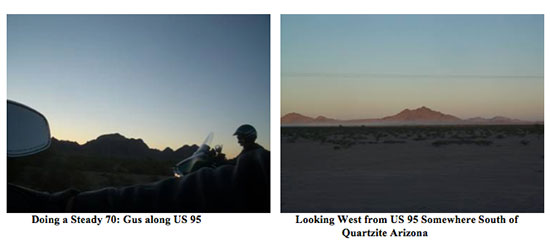
They needed some gas and a chance to unclench their frozen bones so they stopped in the town of Hope. Unknowingly, in less than 30 miles since the INS checkpoint, they had exited the immigration war zone and entered a dead zone devoid of human activity despite the buildings and town markers.
Named in the hope for increased business after the state relocated a main road in 1920 through the place, Hope consisted of one empty RV park, one lonely gas station, and one dilapidated antique store. Augustus’s iconic Twilight Zone image said it all about this place called Hope.
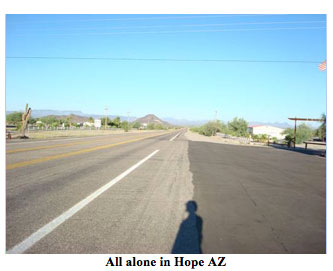
They remained suspended for a long time in this Rod Serling dead zone. Not until they were within 90 miles of Flagstaff and observed the reemergence of walking and talking human beings upon the landscape were they certain that they had exited this lifeless sector. Here is another unsettling image of the barrenness they saw.
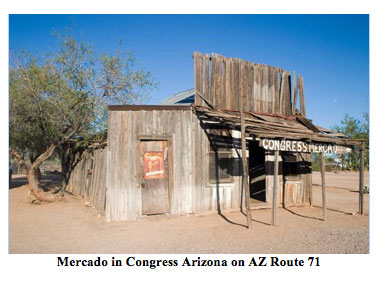
They slowed the pace down repeatedly along Arizona routes 89 and 89A due to the scenery in Prescott, Jerome and Sedona. Some consider the telegenic Sedona area as the most beautiful place in the USA. Its timeless red rocks first fired the imaginations of American Indian settlers more than eleven millennia ago. Subsequent 19th century homesteaders, 20th century artists and New Age spiritualists have been beguiled as well. From the observed increase in live green signage cheek by jowl with the cancerous spread of real estate development since their last visit in 2001, competing agendas abound for this Eden.
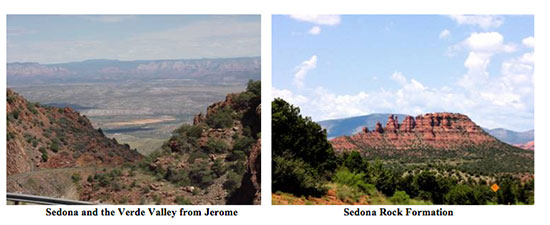
By midday with the temperatures soaring, they wisely stopped for the day in Flagstaff after 320 miles. They had hoped to rendezvous with Steve that night in Flagstaff. The heat in Mojave Desert’s dead zone nearly got him, so he ended his journey a 150 miles short of Flagstaff in Kingman. They agreed to join Steve in Albuquerque New Mexico at his sister’s house.
Copyright © 2017 From My Isle Seat
www.vicsocotra.com
Arrias on Bismarck and East Asia
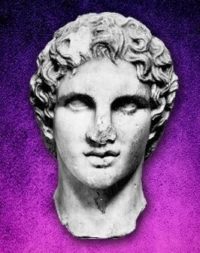 The other day I heard someone opine that it’s a crime that the US hadn’t (and wasn’t considering) going into Syria to take down President Assad.
The other day I heard someone opine that it’s a crime that the US hadn’t (and wasn’t considering) going into Syria to take down President Assad.
Well, consider this:
While the focus of the US, and much of the rest of the world, has been squarely on the US elections, and ISIS, things have continued at quite a pace in East Asia. In the last 5 years China has moved aggressively into the South China Sea (through which passes some 20% of all international trade), claiming it as their own. Meanwhile, China continues expanding its army, navy and air force.
Elsewhere, Thailand, the Philippines, Malaysia, and Indonesia have drifted away from the US and towards China, a result of both neglect on the part of the US during the same 5 years, and the muscular foreign policy of China.
And, North Korea appears to be on the verge of producing both an intercontinental ballistic missile and a nuclear weapon to fit atop that missile.
A rising, expansive power, with a centralized government and few of the restraints found in a western democracy, has been extending its reach, and a new nuclear power has emerged, while the US has been focused elsewhere.
The question is: What next?
Almost to a certainty there will be confrontations between the US (and certain key allies, Japan and the Republic of Korea) and China. And North Korea. Whether those confrontations are violent, and whether they escalate, is the real question. Our goal, quite obviously, is to keep these confrontations as peaceful as possible and where that isn’t possible, to limit the escalation. And to make sure that, in the end, US aims are achieved.
But in getting there, we need to remember something…
Despite how morally superior we might want to sound, it’s critical in the nuclear age that we recognize that every nation will, and must, weigh the cost of survival against the cost of its other interests.
Any planning must first be bounded by the knowledge that potential enemies have nuclear weapons. It’s for that reason that our nuclear force must be modernized and kept ready, to ensure that any possible enemy understands that our nuclear forces are credible and that they can’t resort to the use of nuclear weapons without paying too high a price. A modern, ready nuclear force therefore acts as a bar to crossing that nuclear threshold.
But long before we get to any nuclear threshold, we as a nation need to consider other thresholds.
Ask yourself this “simple” question: how many American lives would you be willing to trade for peace in Syria? 400,000 Syrians have now died in their civil war. Would you be willing to send in the Marines to bring peace to that country? If so, how many dead Marines would be too many?
That’s not an easy question, and there are no easy answers.
Otto von Bismarck, the foreign minister of Prussia 1862 – 1890 (and chancellor of the Germany 1871 – 1890) is reputed to have said, as to the question of Germany getting involved in the Balkans: “the whole of the Balkans is not worth the bones of a single Pomeranian grenadier.”
Bismarck had orchestrated the War of German Unification, the Austro-Prussian War and the Franco-Prussian War. He was an exceptional strategist, probably the best in two centuries, and he understood costs and national interests. He was willing to expend assets – and lives – in defense of those interests. But only in defense of those interests. He understood Germany’s national interests, and he knew where those interests ended.
It’s in this sense that the US must be judicious in where it applies effort, where it commits forces, where it draws “red lines,” and where it lets others do what they will.
SecDef Mattis understands this calculus, he understands US interests, and he understands our approach to China needs to be well thought out and deliberate.
But there seem to be a fair number of folks who think the US should be rushing here, there and everywhere to defend some other set of interests, the “common interests of mankind” or some such thing. They need to ask themselves exactly what price they’re willing to pay, particularly with other peoples’ lives.
Copyright 2017 Arrias
http://www.vicsocotra.com
